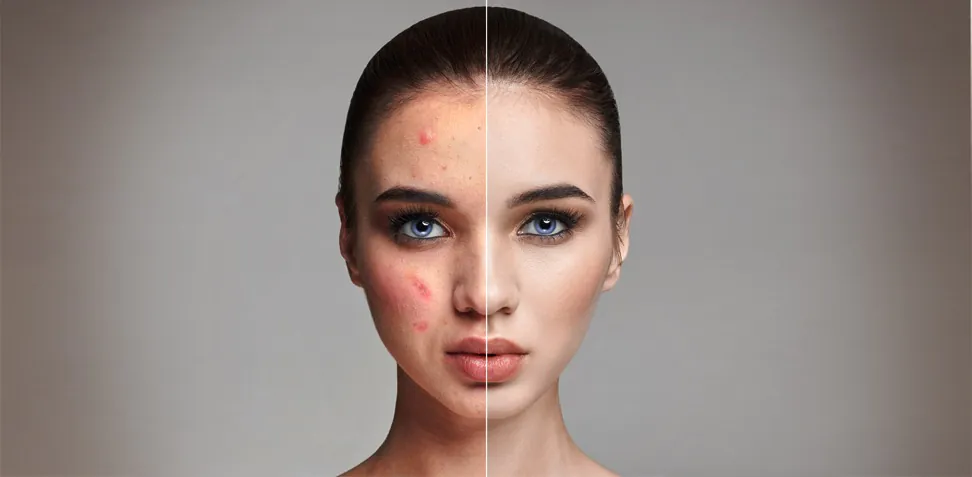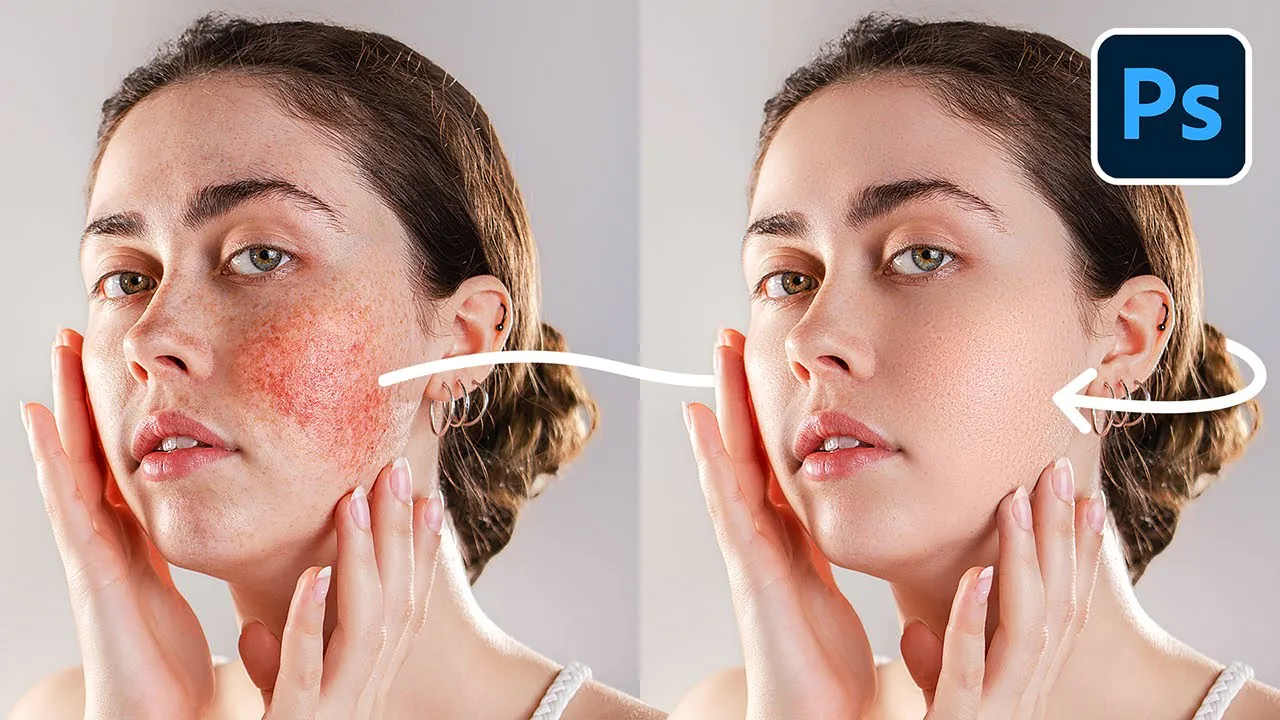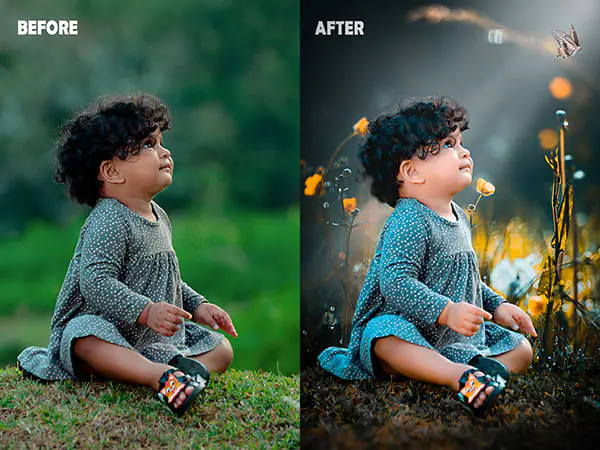
How to Achieve Professional Photo Retouching
The art of photo retouching has become an integral part of modern photography, allowing photographers to enhance their images and bring out the full potential of their subjects. With the advancements in digital editing tools and techniques, achieving professional-level retouching has become more accessible. This blog will embark on professional photo retouching by reviewing the techniques, tools, and innovative concepts that professionals employ to produce perfect and alluring outcomes. Photographers, graphic designers, and enthusiasts can improve their retouching abilities to create attractive and polished photos by adhering to these guidelines.
Understanding the Objectives of Photo Retouching
Photo retouching serves various objectives to enhance an image’s overall quality and appeal. Some key objectives include:
Enhancing the Image’s Visual Appeal: Photo retouching primarily aims to improve the overall visual appeal of an image. It involves correcting imperfections, adjusting colors, and optimizing the composition. Photographers can transform ordinary images into eye-catching visual masterpieces by applying retouching techniques.
Maintaining a Natural Appearance: It is essential to balance making enhancements and preserving the image’s authenticity while retouching. The goal is to create a polished look without making it look overly edited or artificial. Retouchers should enhance the image while retaining its natural essence and character.
Essential Tools for Professional Photo Retouching
Professional photo retouching requires the use of specific tools to achieve high-quality results. These tools enable photographers, graphic designers, and retouchers to enhance images, correct imperfections, and create visually appealing compositions.
Adobe Photoshop: The Industry-Standard Software Adobe Photoshop is widely recognized as the industry-standard software for photo retouching. It has comprehensive tools and functionalities enabling professionals to make precise and detailed edits. Photoshop allows retouchers to adjust exposure, color balance, and tone, remove blemishes, and perform complex retouching tasks. With its layers and masking capabilities, Photoshop facilitates non-destructive editing, preserving the original image while making modifications. Its advanced features, such as content-aware fill and spot healing brush, provide efficient tools for removing unwanted objects and imperfections. Overall, Adobe Photoshop is an indispensable tool for professional retouching, offering unparalleled flexibility and control over the editing process.
Adobe Lightroom: Streamlined Workflow and Non-Destructive Editing (150 words) Adobe Lightroom is another essential tool for professional photo retouching. While Photoshop focuses on pixel-level editing, Lightroom offers a streamlined workflow and efficient batch-editing capabilities. It provides photographers with a comprehensive platform to organize, manage, and edit large volumes of images. Lightroom’s non-destructive editing approach allows retouchers to adjust without altering the original image data. This feature enables easy experimentation and the ability to revert to the original image anytime. With Lightroom, retouchers can perform basic adjustments such as exposure, contrast, white balance and apply presets to enhance the overall look of their images. Its integrated catalog system and seamless integration with Photoshop make it an invaluable tool for retouching workflows.
Wacom Tablets For Precision and Control: Wacom tablets, including models like Intuos and Cintiq, provide retouchers with exceptional precision and control during the retouching process. These graphics tablets allow users to interact with the image directly using a stylus pen, replicating the natural feel of traditional drawing or painting. The pen’s pressure sensitivity enables retouchers to make subtle adjustments with varying brush sizes and opacity levels. This level of control is especially crucial when retouching fine details such as skin textures or hair strands. Wacom tablets enhance the retouching experience, making it more intuitive and efficient. Professionals widely favor them for their ability to deliver precise edits, making them an essential tool for achieving professional results in photo retouching.
Additional Hardware and Accessories: Besides the software tools mentioned above, several other hardware and accessories can enhance the photo retouching. These include high-quality monitors with accurate color representation, calibrated colorimeters or spectrophotometers for color accuracy, and ergonomic tools like color-accurate graphics tablets or adjustable monitors to reduce physical strain during long editing sessions. Investing in these supplementary tools can significantly improve the retouching workflow and the overall quality of the final images.
Fundamental Retouching Techniques
Fundamental retouching techniques form the foundation of professional photo retouching. These techniques involve correcting exposure, removing imperfections, enhancing details, and adjusting color balance. Mastering these techniques is essential for achieving polished and visually appealing results. The critical fundamental retouching techniques used by professionals are:
Correcting Exposure and White Balance: One of the fundamental aspects of retouching is restoring exposure and white balance. Exposure adjustments ensure that the image’s brightness and contrast levels are optimized. Tools such as levels, curves, and exposure adjustments in Adobe Photoshop enable retouchers to fine-tune the overall tonal range. White balance adjustments address color temperature issues, ensuring the accurate rendering of colors in the image. Techniques like color balance and temperature adjustments allow retouchers to correct unwanted color casts and achieve a natural-looking image.
Removing Blemishes and Imperfections: Removing blemishes and imperfections is common in photo retouching, particularly portrait editing. Tools such as the healing brush, spot healing brush, and clone stamp tool seamlessly remove acne, scars, wrinkles, or other unwanted elements. These tools sample nearby pixels and intelligently blend them with the targeted areas, preserving the texture and maintaining a natural appearance. Care is vital to ensure that the regions retouched blend seamlessly with the surrounding pixels, avoiding apparent signs of editing.
Smoothing Skin and Enhancing Texture: When retouching portraits, achieving smooth skin while preserving texture is crucial. Frequency separation is a popular technique for separating skin texture from skin tones, allowing retouchers to address imperfections without losing detail. Retouchers can enhance skin tone and contour by utilizing techniques like dodging and burning, emphasizing natural highlights and shadows. The goal is to create a polished and refined look while retaining the subject’s unique features and maintaining a natural appearance.
Color Correction and Enhancement: Color correction and enhancement techniques are vital in professional photo retouching. Adjusting color balance, saturation, and contrast can significantly improve the visual impact of an image. Selective color adjustments, color grading, and adjustment layers allow retouchers to fine-tune specific colors or areas of the picture. Techniques such as gradient maps and targeted color adjustments help create a cohesive and visually appealing color palette. Proper color correction ensures the image appears vibrant, well-balanced, and consistent with the intended mood or aesthetic.
Advanced Retouching Techniques
Introduction: Advanced retouching techniques go beyond the fundamentals, allowing retouchers to address complex retouching needs and achieve highly detailed and refined results. These techniques require a deeper understanding of photo editing software and a focus on detail.
Object Removal and Background Manipulation: Advanced retouching often involves removing unwanted objects or distractions from an image. Tools like content-aware fill, and the patch tool can be used to replace or remove elements seamlessly. Background manipulation techniques like replacing or enhancing backgrounds, can significantly impact an image’s composition and overall visual impact. Precise masking, cloning, and blending techniques seamlessly integrate the retouched elements with the rest of the image.
Portrait Retouching: Portrait retouching requires specific attention to facial features. Advanced retouching, teeth whitening, eye enhancement, and subtle facial reshaping can create a polished and flattering look. Dodge and burn techniques enhance highlights and shadows, adding depth and dimension to facial features. Care should be taken to avoid excessive retouching that may result in an artificial appearance. The goal is to achieve a natural-looking result that enhances the subject’s beauty while maintaining its unique characteristics.
Beauty and Fashion Retouching: Beauty and fashion retouching often involve more advanced techniques to achieve a flawless and captivating look. That includes enhancing makeup, adjusting hair, and adding or altering clothing details. Techniques like frequency separation, where skin texture and tone are separated, allow for precise skin retouching. Additionally, retouchers may employ techniques like liquefying to reshape certain elements, such as hair or clothing. The aim is to create a visually stunning image that meets industry standards while maintaining a natural and authentic appearance.
Adhering to best practices ensures consistency, efficiency, and high-quality results in professional photo retouching. Some of these practices include:
Non-Destructive Editing: Working with layers, adjustment layers, and masks allows for non-destructive editing, preserving the original image and providing flexibility for future modifications. Non-destructive editing also allows fine-tune specific adjustments without affecting the rest of the image.
Attention to Detail: Attention to fine details is crucial for achieving a professional result. Zooming in and inspecting the image at various magnifications helps identify and correct imperfections that may be missed at a regular viewing size. Attention to detail ensures a refined and polished final image.
Subtlety and Moderation: It is important to exercise restraint when retouching to maintain a natural appearance. Overdoing edits can result in an artificial look that detracts from the overall quality of the image. Retouchers should aim for subtle enhancements that enhance the image without overwhelming it.
Continuous Learning and Experimentation: The field of photo retouching is constantly evolving, with new tools, techniques, and trends emerging regularly. Continuous learning, keeping up with industry updates, and experimenting with different approaches allow retouchers to expand their skills and develop a unique style. Staying curious, exploring new techniques, and refining existing skills are important.
Conclusion
Professional photo retouching is an art form that requires technical skills, creativity, and a keen eye for detail. Photographers and retouchers can achieve exceptional results by understanding the objectives, mastering essential tools and techniques, and adhering to best practices. Continuous learning, experimentation, balancing enhancements and a natural appearance are key to honing one’s retouching skills. With dedication and practice, anyone can elevate their photo retouching abilities and produce visually captivating and professional-looking images.





